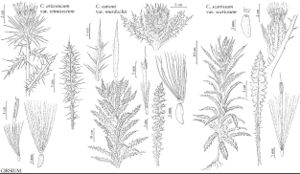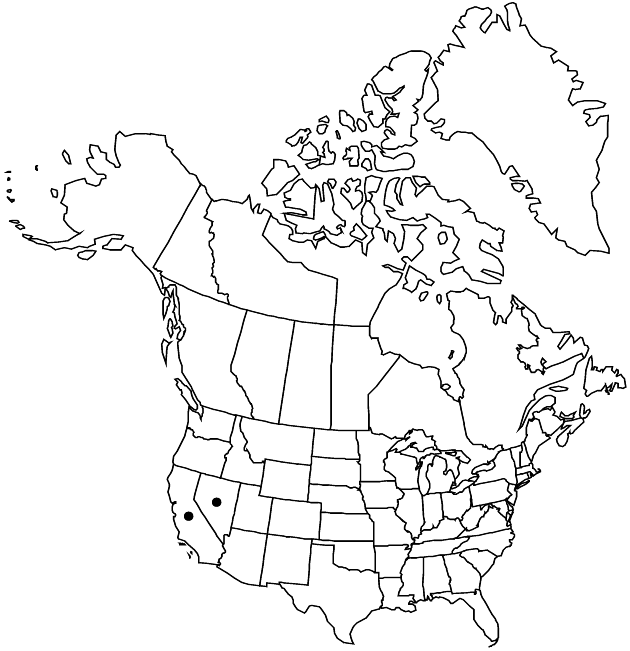Difference between revisions of "Cirsium arizonicum var. tenuisectum"
Sida 21: 210. 2004.
FNA>Volume Importer |
FNA>Volume Importer |
(No difference)
| |
Revision as of 18:35, 24 September 2019
Stems thinly arachnoid tomentose, ± glabrate, without septate trichomes. Leaf blades deeply divided, often nearly to the midveins, abaxial faces arachnoid tomentose or sometimes glabrate, without septate trichomes, adaxial thinly arachnoid or glabrate; main marginal spines often stout, 5–30 mm; cauline bases narrowed to truncate or ± clasping, but not or only slightly decurrent. Involucres cylindric to campanulate. Phyllary spines stout, 5–25 mm. Corollas reddish purple, 25–35 mm, tubes 10–13, throats 5–8 mm, lobes 10–13.5 mm; style tips 1–2 mm. 2n = 34 (as C. nidulum).
Phenology: Flowering summer–fall (Jun–Nov).
Habitat: Rocky slopes, drainages, roadsides, pine-oak-juniper woodlands, montane coniferous forests
Elevation: 1500–2800 m
Discussion
Of conservation concern.
Variety tenuisectum occurs in the New York Mountains of southeastern California and the Spring Mountains of southwestern Nevada. The name Cirsium nidulum has long been misapplied to the plants here treated as var. tenuisectum (e.g., P. A. Munz 1959; J. T. Howell 1960b; R. J. Moore and C. Frankton 1974b; D. J. Keil and C. E. Turner 1993). My examination of the type of C. nidulum indicates that the taxon is properly treated as a synonym of C. arizonicum var. arizonicum.
Cirsium eatonii var. clokeyi occurs in close proximity to C. arizonicum var. tenuisectum in the ski area of upper Lee Canyon in the Spring Mountains. I did not see any evidence of hybridization during my brief field survey in that area.
Selected References
None.

